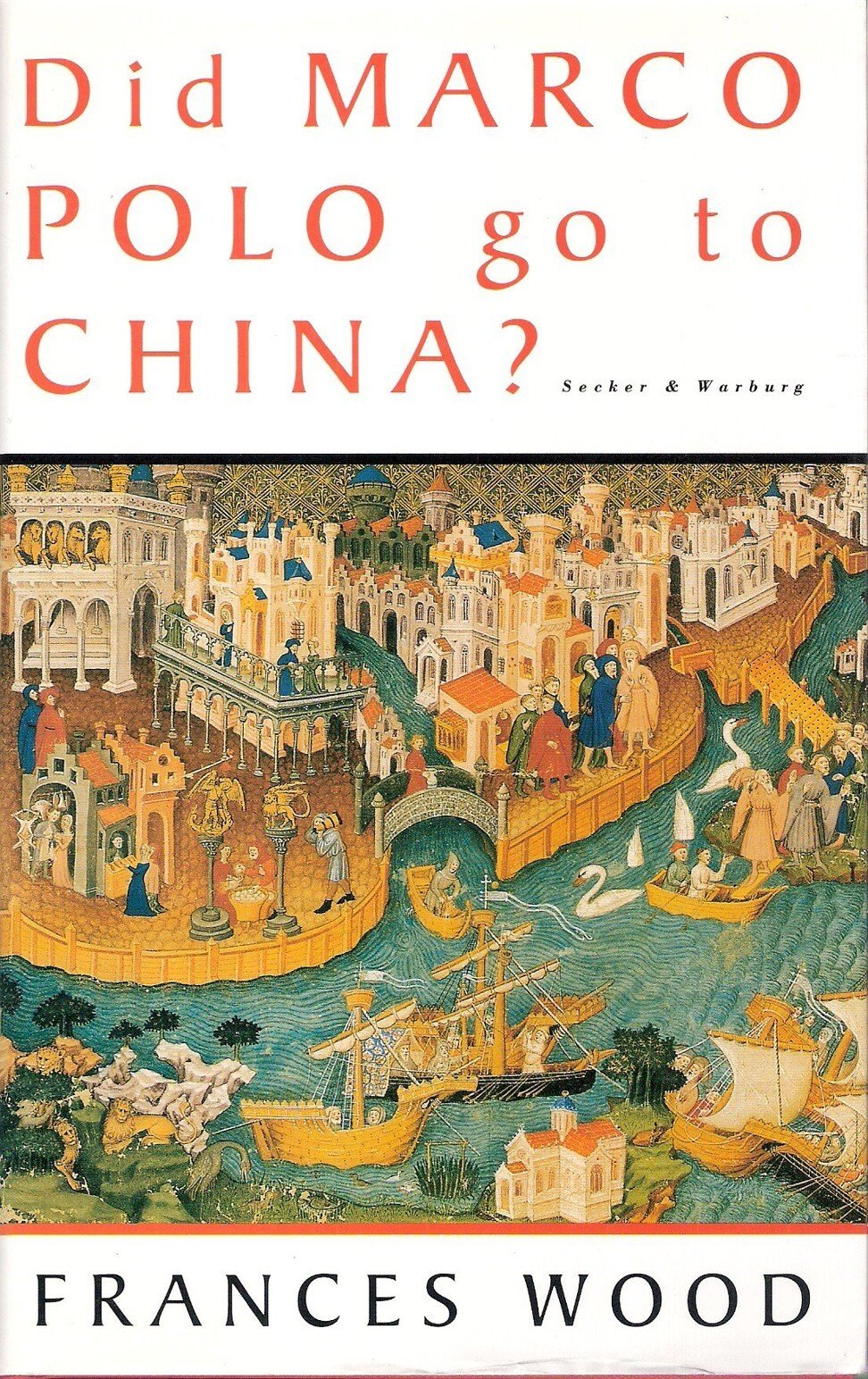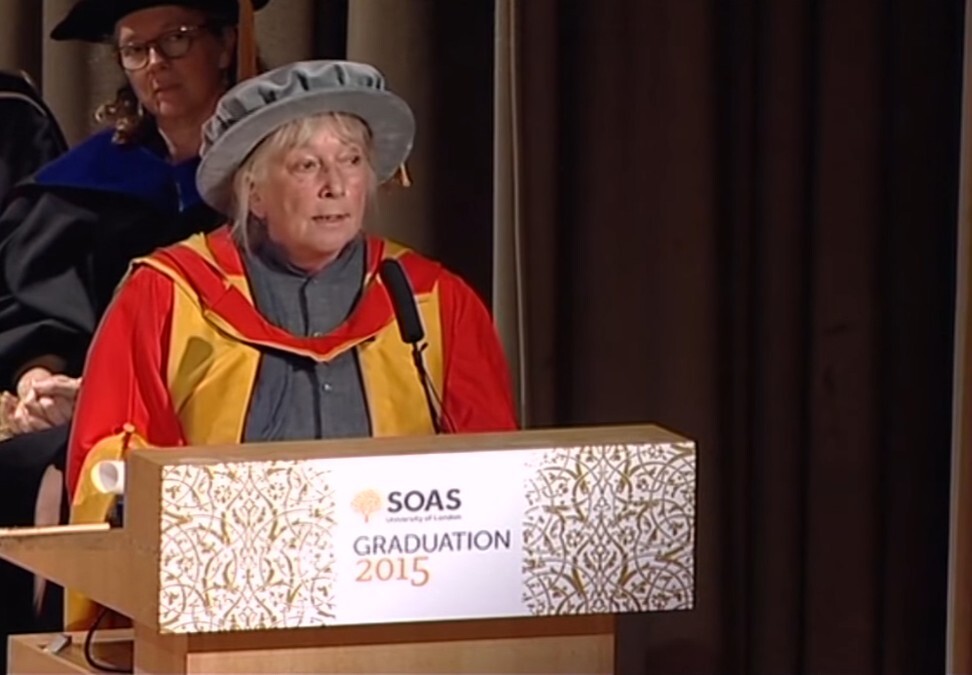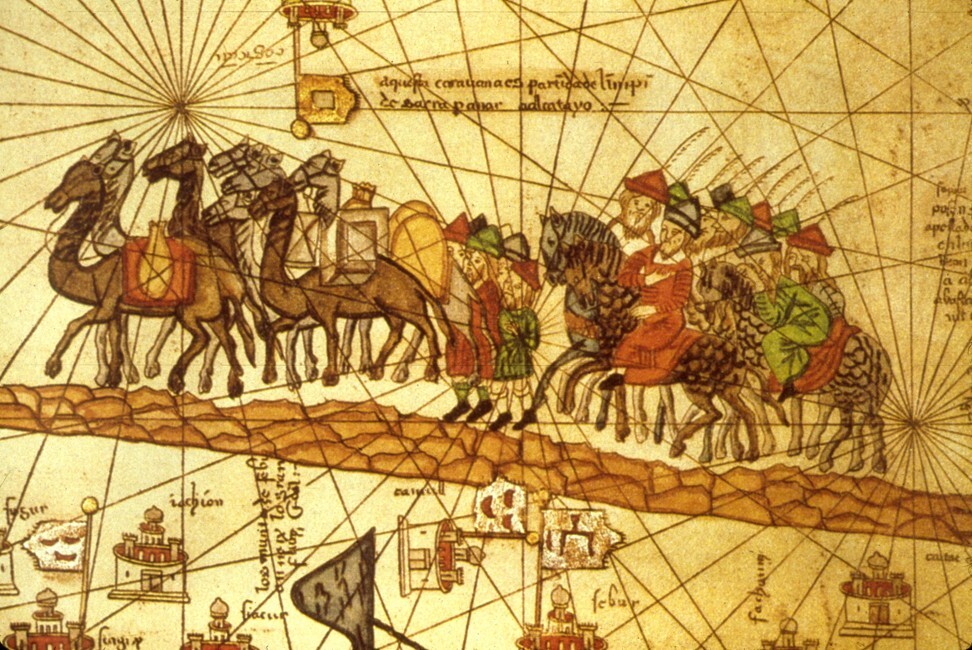
Marco Polo’s book on China omits tea, chopsticks, bound feet – even the Great Wall. Why does his myth endure, 25 years after author sowed doubt the ‘great explorer’ travelled east – or ever existed?
- Marco Polo, a Venetian adventurer, is famous for travelling to and around China in the 13th century and co-writing a book on his journey while imprisoned
- Despite evidence to the contrary, Polo and the experiences he recounts are considered historical facts
Twenty-five years ago Dr Frances Wood, curator of Chinese collections at the British Library, wrote a book whose title posed a question: Did Marco Polo go to China? Her conclusion was “probably not”.
She was fairly sure the 13th-century Venetian lad of popular imagination who walked to China with his father and uncle, and who sailed home again 24 years later, never existed at all.
The response she received took her aback. “There was an absolute furore about it,” she says. “I went to work as usual to discover there was a Times leader about it and that television companies had been ringing the British Library all through the night.”
Her arguments were familiar to Mongolists studying China’s Yuan dynasty, yet little discussed among sinologists, and completely unknown to the general public, who reacted as if they’d just been told that the Earth was flat.

The book’s arguments were not hard to understand, and often concerned simple inconsistencies, inaccuracies and omissions in Marco Polo’s The Description of the World, commonly known as The Travels. This was supposedly written down by famous romance writer Rustichello at Polo’s dictation in 1298.
The evidence against Polo was publicised in interviews, articles and reviews, and set out again in a subsequent television documentary. Yet just four years after the book’s publication, business information service Bloomberg named Marco Polo as one of the most influential businessmen of the past millennium.
Collective punishment in China: a thing of the past?
He is referred to in just about every China travel blog post or YouTube video, and even the Chinese tourism industry remains convinced that Polo “discovered” China. Many towns eagerly claim to have received a visit from him.
“What tourism does for China is far more important than any access to the truth,” says Wood. “Marco Polo will stay because he’s so useful.”

In her book, Wood gives Polo the benefit of the doubt whenever possible, but she still considers the evidence against him to be overwhelming. Nothing that’s been said or come to light in the last 25 years has changed her mind.
A Description of the World tells us that Polo’s father and uncle had visited Mongol emperor Kublai Khan once before, setting out again in 1271 with the then 17-year-old Marco, and reaching Cambaluc (Beijing) more than three years later. The Khan recognised the young man as precociously perceptive and, for the next 17 years, Polo travelled around his vast domain on various important missions for him. The Polos eventually left by sea in 1292, arriving back in Venice in 1295.
Three years later, Polo found himself a prisoner of war after a sea battle between Venice and Genoa, and under house arrest with Rustichello. The rest is history. Or largely fiction.

Polo fails to mention the tiny bound feet hobbling most women, tea (drunk everywhere in China, but unknown in Europe at the time), chopsticks, the Chinese writing system or even the Great Wall. Most of these aspects of Chinese culture continue to fascinate Western visitors, as they did Polo’s contemporaries, both missionaries and traders, who do mention them.
They also mention each other, but never Polo. And despite Polo’s important imperial missions, and his claim to have been ruler of wealthy Yangzhou, on the Grand Canal, for three years, there’s no record of him in any surviving Mongol or Chinese documents either.
Polo failed to learn Chinese or Mongolian place names and instead uses Persian versions, which can be found in a contemporary published source together with various errors that parallel Polo’s own mistakes precisely. He’s frequently wrong about dates, geographical locations, times and distances, and much else.
He claims to have been present at the Mongol reduction of the Song dynasty holdout city Xianyang and to have advised the Mongol forces on the construction and operation of siege engines. Yet there’s other evidence that Persian engineers did this work, and the siege was anyway over before the Polos reached China.

Excuses for Polo’s inaccuracies and oversights include that the original manuscript is lost, so errors can be attributed to his ghostwriter, who had his own romance-writer agenda. That writer perhaps glossed over some information, added some spice and omitted material he didn’t find interesting.
Each copyist and translator then made his own “improvements”, either editing the text or adding new material to suit whoever commissioned the copy: more religion for the religious and more on trade for the wealthy merchant. Of 54 extant manuscripts, no two are entirely alike.
And given that Polo was describing from memory so many events over such a long period, it would be surprising if he didn’t make a few mistakes. That he exaggerated his own importance doesn’t mean that the rest of what he had to say wasn’t true.

So what is right is right, and what is wrong is apparently excusable. Polo’s account can thus never be found inauthentic, although there’s still nothing at all that confirms his presence in China.
That a fictional work of this kind could be convincing is demonstrated by Sir John Mandeville’s Travels, slightly later than the Polo book and immensely popular in its day, which was later discovered to be entirely concocted from imagination and passages of others’ work. A contemporary of the Polos, a Florentine banker called Pegolotti, compiled a guide to trading in the Far East openly derived from others’ information, published in 1342.
Polo’s story may have been considered fiction right from the start. A richly illustrated copy of the manuscript dated between 1320 and 1410 in Oxford’s Bodleian Library is bound together with two fictional romances about Alexander the Great. It is not until the mid-15th century that another copy is found between the same covers as other travel material, and presented as a precise geographical account.

Wood still sees value in Polo’s book. “It probably does reflect a view of China whether it was second-hand, third-hand, first-hand, seen by someone or just heard. The stuff is valid but you need to look quite carefully at the date of copying of the manuscript, because it’s no good saying that during the Yuan dynasty they had this, that, and the other if you’re referring to a manuscript that’s produced in 1550. The Mongols have long gone by then.”
Perhaps the most entertaining edition of The Description of the World in print in English is the Yule-Cordier edition of 1903, which compiles many different versions and struggles to explain away inconsistencies with extensive footnotes and commentaries that exceed the main text in volume, and are in fact the better read.
Overall, the position of sinologists hasn’t changed much since Wood’s book. “Nevertheless it provoked people into working incredibly hard,” she says, self-deprecatingly, “determined to find holes in any pathetic argument that I had made.
“There have been several dozen conferences on Marco Polo since my book came out, of which I was invited to two. Generally speaking they give me an enormously wide berth, and yet the conferences were definitely provoked by what I do. People are leaping forward to the defence of young Marco.”
Tübingen University professor Hans Ulrich Vogel’s Marco Polo Was in China: New Evidence from Currencies, Salts and Revenues (2012), she describes cheerfully as “640-plus pages of ‘Frances Wood is wrong’”.
Vogel makes much of the editing carried out by copyists to please clients and that Polo’s detailed accounts of the use of money and the use of salt as a commodity are remarkably accurate. But this may only demonstrate that some hearsay is better than other hearsay, and not that Polo was present.
“I think there are elements of creation, invention, etc, and we should look at Polo critically and take the good bits and laugh at the bad bits,” says Wood. “But it is not in the academic mind to laugh at anything.”
Even in Venice, the story of the Polo family lacks corroboration. There were several Polo families and Marco was a popular name. There’s a Polo will of the right date but it mentions nothing of Marco’s China sojourn, nor that he bequeaths anything unique.
Wood declines to theorise an alternative creation story for the book. “As we don’t have the ‘original’ manuscript, all speculation as to how the text was compiled is just speculation,” she says. “Rustichello could have compiled travellers’ tales and existing texts but his involvement may also be a fabrication – we are talking about a time when the idea of authorship and copyright simply didn’t exist.”
Stories of the Polo type have perennial appeal: young person gets caught up in Great Events, often with dukes, princesses, kings and queens. Polo is Lord of the Rings’ Frodo Baggins, the Pevensie children in the Narnia stories, and many an Enid Blyton character. He’s Luke Skywalker and Harry Potter.
Wood’s arguments still stand up and Did Marco Polo go to China? remains a persuasive and drily witty read, 25 years on. Yet it seems we still find the tale of the boy adventurer too compelling to relinquish.

